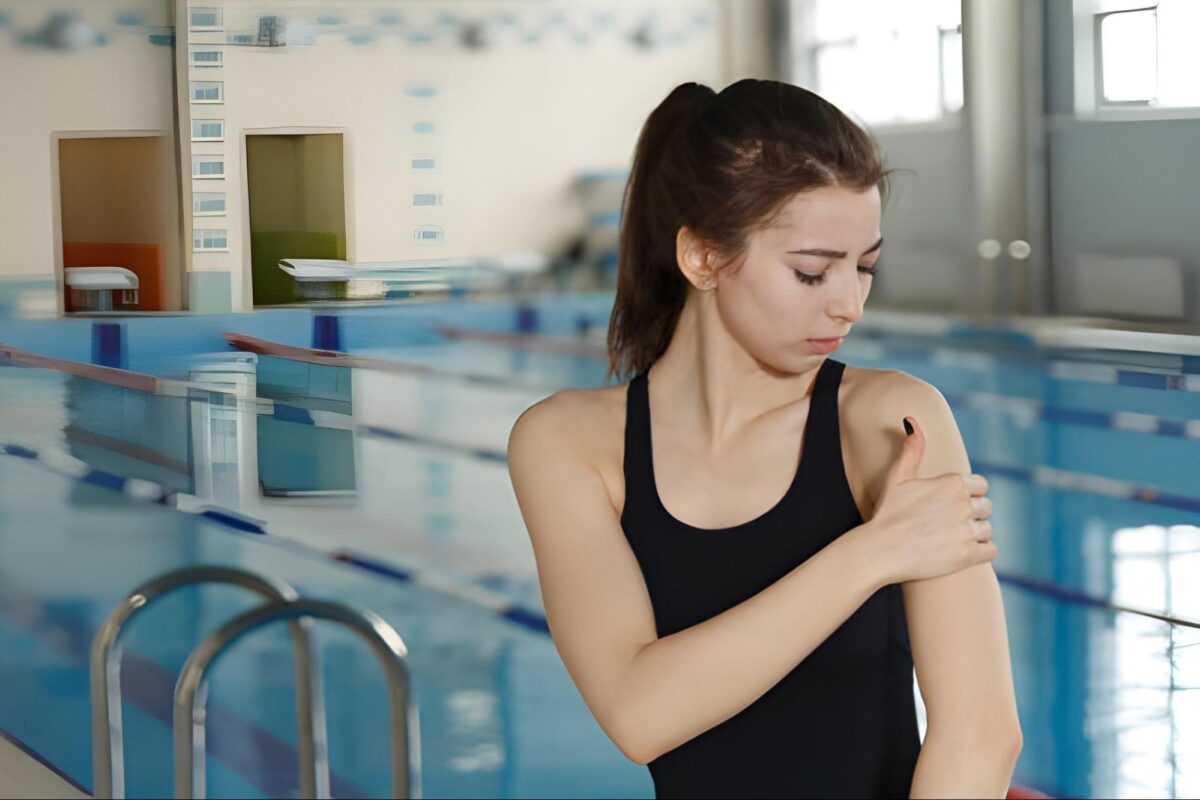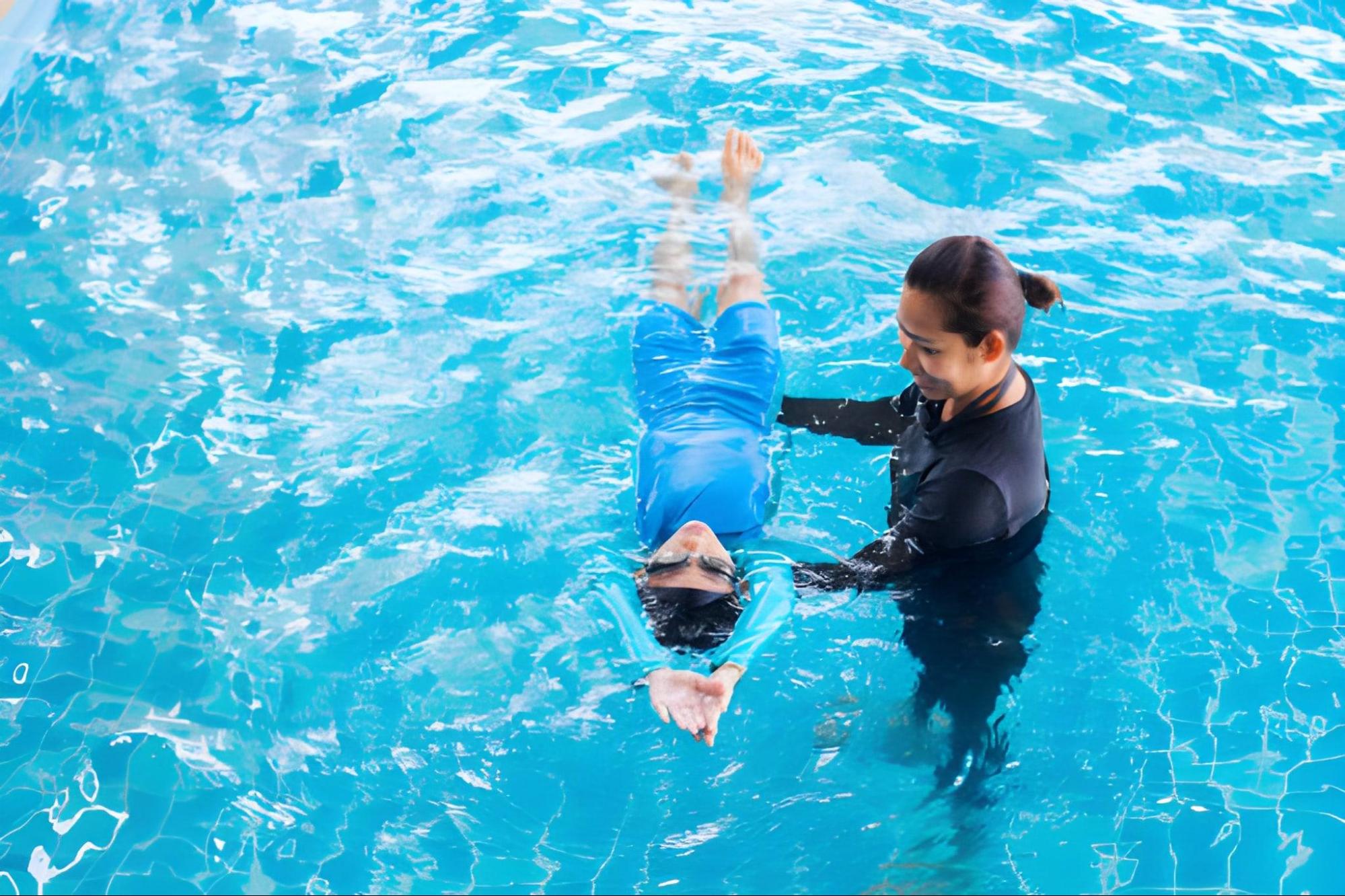How to Prevent Cramps While Swimming?

by Coach Mark
Muscle cramps can turn an enjoyable swim into a dangerous situation in an instant. These sudden spasms not only hinder your movement in the water but can also pose serious safety risks, including the possibility of drowning.
Fortunately, there are strategies to prevent cramps while swimming. By ensuring a proper warm-up, staying well-hydrated, incorporating regular stretching, and taking precautions in cold water, swimmers can significantly reduce the risk of cramps.
Understanding Cramps
A cramp is an involuntary and often sudden contraction of a muscle, usually accompanied by sharp, intense pain. These spasms commonly affect muscle groups such as the calves, feet, thighs, and even the hands, which are all actively engaged during swimming.
As a result, cramps can restrict movement, making it difficult to kick, glide, or maintain proper form in the water. Moreover, because these contractions occur unexpectedly, they can disrupt your rhythm and balance while swimming, increasing the risk of accidents.
Factors That Cause Cramps During Swimming
Several physical and environmental factors contribute to cramps when swimming:
- Improper or skipped warm-up
- Excessive exertion
- Dehydration and low electrolytes.
- Cold water exposure
- Strained muscle positions
Groups Susceptible to Cramps During Swimming
Certain groups of swimmers are more prone to cramps due to a combination of experience, age, and intensity of activity:
- Novice Swimmers: Beginners often face cramps because of poor technique and unfamiliarity with proper muscle coordination, which can place extra strain on their muscles.
- Infrequent Swimmers: Those who swim only occasionally may experience cramps more easily, as their muscles are not conditioned to continuous activity in the water.
- Elderly Swimmers: Age-related factors, such as reduced muscle responsiveness and slower circulation, make older swimmers more susceptible to sudden spasms.
- High-Intensity Training Enthusiasts: Swimmers engaged in rigorous or prolonged training sessions can trigger cramps due to overexertion and muscle fatigue.
Tips for Preventing Cramps While Swimming
Effective strategies can help prevent cramps while swimming, ensuring both safety and a more enjoyable experience in the water:
- Prepare your muscles: Before entering the water, warm up your muscles and incorporate gentle stretches to improve flexibility and reduce tension. Start with short-distance runs or light exercises, such as moving neck, hips, legs, ankles, and toes in varying directions. Performing these movements clockwise and counterclockwise helps prepare your body for swimming and lower the risk of cramps.
- Cold water precautions: When swimming in cold water, allow your body to acclimate gradually. Enter the water slowly, avoid sudden immersion, and monitor your body for signs of muscle tightening or discomfort. This helps reduce the likelihood of cramps and other cold-related issues.
- Stay hydrated: A common myth about swimming is that you don’t need water since you’re surrounded by it. In reality, swimming causes fluid loss through sweat and breathing, making proper hydration essential to prevent cramps and support energy.
- Avoid overexertion and unsafe conditions: Avoid swimming too far, using swim fins excessively, or venturing into whirlpools and strong currents. This can overwork your muscles, leading to fatigue and increasing the likelihood of cramps. Also, when you feel tired, slowing down and swimming toward the shore helps prevent cramps caused by overexertion.
- Be mindful of health conditions: Individuals with serious health concerns should consult a doctor before swimming, as they may be more susceptible to cramps or other complications in the water.
- Post-swim care: After swimming, take 10–15 minutes to rest, shower with warm water, and continue stretching to relax muscles and prevent post-swim cramping.
Stay Safe and Confident in the Water with Marsden Swim School

Besides following the tips to prevent cramps, professional swimming lessons are equally important to build confidence, improve technique, and ensure safer sessions.
At Marsden Swim School, we offer expert swimming classes in Singapore for all ages. This includes baby swimming classes and adult programs, ensuring every swimmer can enjoy the water safely and comfortably.
Enroll today and take the first step toward a safer, more confident swimming experience.

